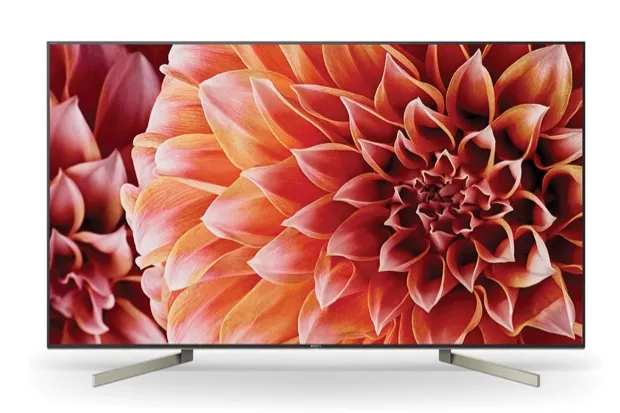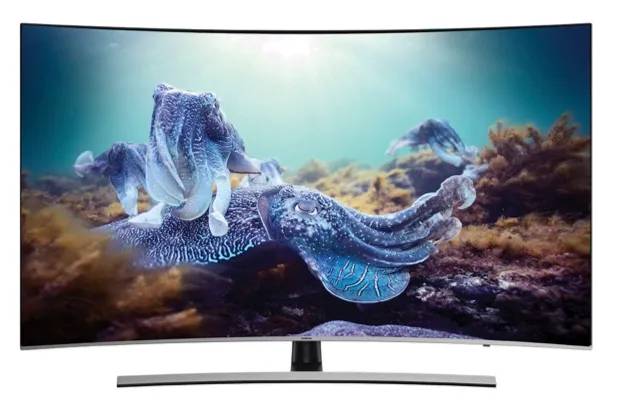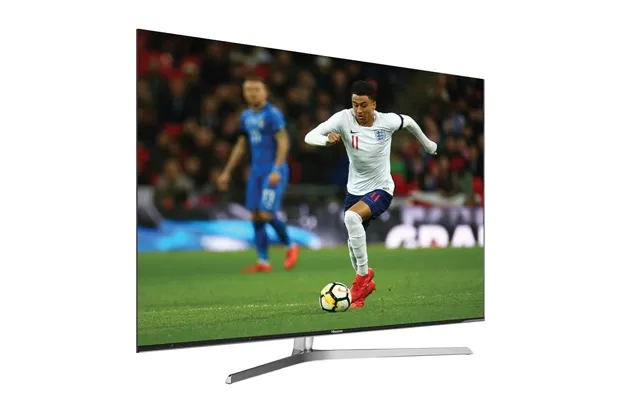There’s never been a better time to make the leap to Ultra HD. The likes of David Attenborough,Mo Salah and Meghan Markle have all been the subject of 4K broadcasts this year, while streaming services offer almost all new additions to their library in an Ultra HD format. In the meantime, most manufacturers have been phasing out the HD TVs (1080p) that usually occupy the affordable end of the shop, replacing them with Ultra HD sets. With more excuses than ever to upgrade (including the World Cup in Russia), we take a look at the ‘affordable’ end of the market to see what’s on offer.
Sony XF90

Out of the box, the Sony is the plumpest set of the lot. The extra girth is hiding a direct-lit LED LCD display with full array dimming. In plain English, the TV’s LED backlight sits behind the LCD screen, dimming dark parts of the picture to create better contrast. This tech does a great job of getting close to LG’s OLED colour fidelity, at half the price. The XF90 also uses Sony’s new X1 Extreme video processor, which did the most convincing job of upgrading HD TV content to 4K resolution. In fact, whatever the source of content, be it Blu-ray, DVD, or non-HDR, the XF90 did an admirable job of making sure the picture was consistently brilliant.
Despite the broad profile, the XF90 cuts an elegant silhouette front-on. The feet are little on the wide side, so check your measurements before buying. The Sony Android TV interface is a mixed bag. It looks slick, but the interface is slower and less intuitive than the competition. The upside is that the XF90 will play extremely well with Android phones, and offers probably the broadest spectrum of compatible apps of the TVs. In terms of picture quality, this set punches above its price range, though its interface and ‘smart’ features lag behind.
LG C8 OLED

The C8 is a stunner. It delivers some of the best home cinema visuals we’ve ever seen. The blacks are deep, and the colours are rich and saturated. With 4K HDR content, there’s a granularity and subtlety in the detail that makes everything feel eerily lifelike. In the past, older OLED models struggled with motion, in other words football, and anything less than a 4K source. LG’s new A9 processor seems to have remedied both issues, with sport and gaming looking flawless, while lesser definition sources are elevated to a high standard. That said, you will have to play around with some of the settings to find your sweet spot. None of this should come as a surprise, considering the price tag. There’s no getting away from the fact that this set, right now, is almost three times what most of us would spend on a TV.
The C8’s new brains also means it can be controlled by speech (although we never felt compelled to use this feature) and it will play nice with both Amazon Alexa and Google Assistant. The interface is easy to use and lightning quick, but looks pretty basic in comparison to the C8’s sharp outward aesthetics. There’s often not a lot of leeway as far as TV design goes, but a slab of 2p-thick glass sat atop a brushed metal plinth is one of the best looks we’ve ever seen. Just protect it from your clumsier mates.
Samsung NU8500

The NU8500 has the ‘wow-factor’. The curved display is framed with the thinnest of bezels, making it seem almost edgeless; the user interface is quick to navigate; and the slimline remote does away with all those buttons you never use. Despite the reductionist design there are many features, including a Universal Guide that pulls together content from across broadcast and streaming services, a smart home hub from which you can control any compatible gadgets, and a Steam link that streams games from your PC to your TV.
It was only when we tested out the picture quality in a number of scenarios that we felt the NU8500 was a little lacking. Motion was a particular problem, with rapid action (jolty cameras or fast-moving balls) getting rough treatment. The NU8500 is also edge-lit (it’s how it’s so breathtakingly thin) which means that the colours felt lacking in places. That said, the HDR+ mode seemed to have the greatest impact on the picture quality, offering the best performance of the screens when it came to boosting older films and TV.
Hisense U7A

The Hisense U7A is the best kind of bargain: one that nobody will know about until you tell them. For one, the design and finish belies its price tag: the bezel is almost as thin as that of the Samsung NU8500, and it’s just as slender from the side. Powered up, the picture is sharp and smooth, though perhaps not as nuanced or vibrant as the other three sets tested. The HDR10 support uplifts content of all types, but it’s not as marked a difference as seen on the other TVs. As befits the official TV of the World Cup, the U7A handles fast movement, removing judder while retaining detail.
The smart system is not as flashy as the others, but it’s easy to navigate and comes with all the important apps and services. There’s even a clever feature that notices when you’re tuning into sports, and offers to flick the TV into its sports video and audio presets. Our only major issue with the TV was that only two out of the four HDMI sockets allow for 60Hz, which means if you’ve got a games console, a set-top box that can handle 4K, and an Ultra HD Blu-ray player, you’ll be visiting the back of the TV more often than you’d like.
Verdict
There was remarkably little to fault with all four sets. Tech companies are getting smarter and making sure all your content looks great – no matter what the quality of the source. In all four sets, the image standard was high. For us, the best balance between price and image fidelity was Sony’s XF90, but that’s based on the idea that’d we’d be using it with a set-top box and games console in place of its built-in interface. LG’s OLED shows how good Ultra HD can be, the Hisense demonstrates that affordable doesn’t mean missing out on quality, and Samsung leads the way in terms of its smart package. Back of the net!
This article was first published in issue 323 of BBC Focus. To read the full magazine PLUS bonus content download theBBC Focus app. Subscribe here and get the lastest issue delivered to your door.

